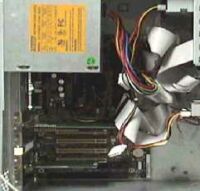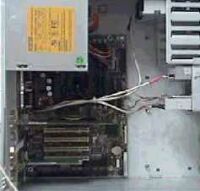In onze afwezigheid zijn er bij AnandTech een drietal verslagen geplaatst van het Intel Developers Forum in Palm Springs California. In deel 1 wordt er o.a. aandacht geschonken aan Intel's Willamette Processor die eind dit jaar beschikbaar wordt op 1.5GHz. Vanwege de erg snelle Integer unit die op tweemaal de kloksnelheid draait (3GHz) zullen vooral office appplicaties qua snelheid er zeer op vooruit gaan:
The Willamette will begin shipping in hundred thousand quantities towards the end of this year, at clock speeds estimated above 1.5GHz. That estimation comes from the aforementioned demonstration at 1.5GHz and the statement that we should expect some higher clock speeds as the manufacturing process matures.[...] One of the biggest features of the Willamette is its ability to run the Integer ALU (Arithmetic Logic Unit) at twice the clock speed of the CPU. This means that on a 1.5GHz Willamette, the Integer ALU is actually running at 3.0GHz. For games this won’t increase performance by a large amount due to their largely floating point oriented performance dependency however in business applications and other applications that are primarily integer performance dependent the Willamette will truly excel. [break]In deel 2 is wat interessante info te vinden over Serial ATA en USB 2.0. Vooral dat eerste is erg leuk omdat dit het einde zal betekenen van de lompe IDE kabels, er wordt minder stroom verbruikt en je hebt geen gedoe meer met master / slave settings:[/break] The future of Serial ATA is being insured with careful planning. In fact, Serial ATA is expected to last us at least 10 years. Future data rates may be introduced simply by increasing the clock. In fact the roadmap already calls for two follow-ups to Serial ATA, which will double and then double again the transfer rates. Look for Serial ATA 1X to be available in mid 2001 and offer 1.5 gigabits/sec, which translates to an effective 150MB/s. Since Serial ATA will be a point to point protocol, the concept of master/slave no longer exists and each drive will not need to share bandwidth.
Further, unlike the original Parallel ATA spec, Serial ATA is being designed with power management and mobility in mind. With fewer signals in the interface, power consumption is lower. Further, the interface and drive supports native power management that is transparent to the rest of the system. Finally, the connector for 3.5” and 2.5” drives will be identical, which will greatly increase flexibility of mobile and desktop designs.
[break]Deel 3 wordt gewijd aan de Intel Itanium 64-bits processor. Hieronder een pic van de CPU en wat info over de i460GX chipset waar de Itanium gebruik van zal maken:[/break]


The CPU itself is a socketed design, but there are no power pins on the connector. Instead of supplying power to the CPU via its connector pins, there is a separate power connector on the edge of the Itanium card itself that is used to supply power to the CPU. The reasoning behind this is that by supplying power to the CPU via a separate connector, Intel could decrease the pin count of the CPU itself while still maintaining a high density pin interface.
The chipset support is provided courtesy of the i460GX chipset, the successor to the i450GX, a high-end Slot-2 chipset. The 460GX supports PC100 SDRAM and PC1600 DDR SDRAM only, but we were given the impression that shipping Itanium systems would be using DDR SDRAM alone. The reason for using SDRAM & DDR SDRAM is because most high end servers and workstations feature large amounts of memory, and a more expensive memory technology such as RDRAM would increase the overall cost of Itanium servers by an almost unmanageable amount.

